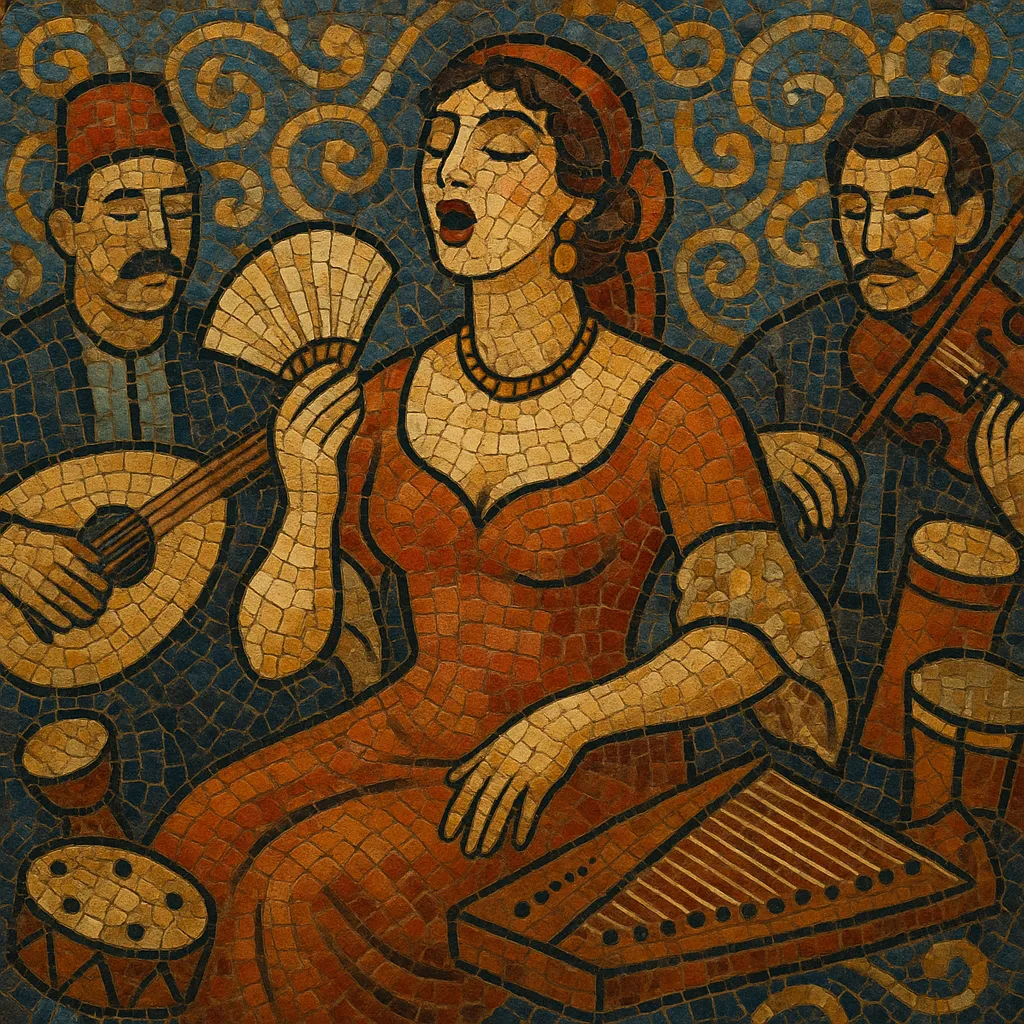Kanto is an Ottoman–Turkish urban stage song tradition that emerged in the late 19th century in Istanbul’s entertainment districts of Pera and Galata.
It blends the modal vocabulary and melodic ornaments of Turkish classical (makam) and urban folk music with the showmanship, humor, and catchy refrains of Western music-hall, cabaret, and operetta.
Typically performed by charismatic female stars (often of Armenian and Greek background) in tuluat (improvised) theatres, kanto features witty, sometimes risqué lyrics, lively dance rhythms (such as çiftetelli or 9/8 karsilama), and engaging call-and-response with the audience.
Instrumentations mix Ottoman and Western instruments—oud, violin, kanun, clarinet, and percussion alongside piano or accordion—producing a theatrical, danceable, and cosmopolitan sound.
Kanto took shape in the late Ottoman era within Istanbul’s bustling theatre scene, especially the Naum Theatre and other venues in Pera/Beyoğlu and Galata. Performers—many from Armenian and Greek communities—adapted Western music-hall, cabaret, and operetta conventions to local tastes, setting playful Turkish lyrics to melodies informed by makam-based Ottoman urban music.
With the advent of recording (e.g., Orfeon, Odeon), kantos circulated widely beyond theatre halls. The genre’s stars built reputations through memorable refrains, humorous character sketches, and danceable rhythms accompanying stage sketches and improvisational tuluat theatre. During the 1910s–1920s, kanto became a defining sound of Istanbul’s cosmopolitan nightlife.
After the Turkish Republic’s founding (1923), entertainment tastes shifted toward tangos, foxtrots, and later Western-influenced popular song. Radio programming and changing social norms reduced the centrality of improvisational theatre, and kanto’s prominence waned, though some artists carried its style into early Turkish light popular music and cabaret venues.
Periodic revivals—on stage, television, and in cabaret—kept the repertoire visible. Performers such as Nurhan Damcıoğlu reintroduced kanto’s theatrical humor and dance energy to new audiences. Today, historians and musicians regard kanto as a key link between Ottoman urban music and modern Turkish stage/pop entertainment, valued for its cosmopolitan flair, comic timing, and audience interaction.


